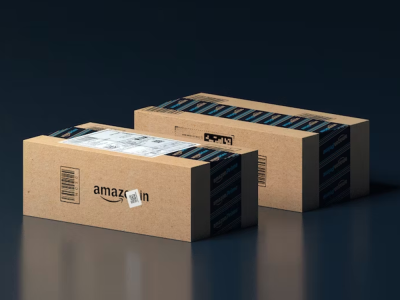

Gaining the Competitive Edge on Amazon Marketplace
Strategies for Effective Competitor Analysis
Competitor analysis on Amazon is crucial for sellers aiming for long-term success on the platform, especially with the constant influx of new sellers joining every day. To prevent your competition from outranking you in the Search Engine Page Results (SERPs) or undercut your prices, it’s important to conduct thorough research on your competitors.
By understanding your competitors’ strengths and weaknesses, you can improve your product page, enhance your Amazon presence, and ultimately boost your sales.
As a leading provider of Amazon advertising solutions, we’ve collated our top tips into comprehensive blog on how to run a competitor analysis on Amazon. But what exactly is competitor analysis on Amazon, and how can you implement it effectively for your Amazon business? Let’s dive into the details.
What is competitor analysis?
Competitor analysis involves researching, identifying, and evaluating your competitors’ performance to adjust your own Amazon business strategy. By understanding what your competitors are doing well and where they fall short, you can learn from their successful tactics, identify market gaps to exploit, and optimise your product page to increase conversions.
Why do you need to run a competitor analysis on Amazon?
Keeping a close eye on the competition is crucial to gain an advantage in Amazon’s SERPs, price optimisation, customer conversion, and other key areas of your business. For instance, 92% of brands sold on Amazon using Amazon advertising in the UK. By thoroughly understanding your competitors, including their strategies and reasons for success, you can create higher-quality Amazon listings that have the potential to outperform them. This can lead to increased visibility and profits for your Amazon business.
How would you find your Amazon competitors?
We provide actionable steps for finding your Amazon competitors. Here are two main steps to get you started:
- Broad Keyword Search: Begin by entering a short-tail keyword related to your product into the Amazon search bar. This will generate a list of the strongest competitors in your niche market. Analyse both the organic results and sponsored ads to gain insights into successful advertising strategies.
- Long-tail Keyword Search: Narrow down your competition by conducting a long-tail keyword search. This will help you identify direct competitors who are selling similar products to yours. Use an effective long-tail keyword that accurately describes your product.
By following these steps, you can discover new competitors, stay up to date with Amazon’s SERPs, and ensure you are using the best keywords in your product titles and descriptions.
How do you analyse your Amazon competitors?
After identifying your competitors, it’s time to analyse their strategies. These are the key metrics to consider:
- Keyword Use: Identify the keywords your competitors are using to rank higher in Amazon’s SERPs. Use keyword tools or review your competitors’ product pages to gather a list of relevant keywords. Incorporate these keywords into your own product titles, descriptions, and bullet points to improve your Amazon SEO ranking.
- Product Page Elements: Evaluate your competitors’ product titles, images, bullet points, and other elements. Compare them to your own Amazon product page and identify areas for improvement. Look for ways to make your product stand out, such as clear and compelling descriptions and well-written bullet points.
- Competitor Pricing: Monitor your competitors’ pricing strategies, as price wars can significantly impact your success on Amazon. While you can’t directly control competitor pricing, staying informed will help you adjust your own prices accordingly and remain competitive without compromising profitability.
- Marketing Strategy: Analyse how your competitors market their products both on and off Amazon. Look for tactics such as social media presence, influencer campaigns, newsletters, and websites. Gain insights into their marketing campaigns and find ways to emulate what works while maintaining your brand’s unique voice.
Using Amazon competitor analysis for your ads:
In addition to optimising your product listings, competitor analysis on Amazon can help you create effective Amazon PPC ads that target your competitors’ Amazon Standard Identification Numbers (ASINs). Product Attribute Targeting (PAT) allows you to display your product ads on your competitors’ product pages. This increases your product’s visibility and directs Amazon shoppers to your own product page, as opposed to your competitors.
By running a product targeting campaign, your ads may appear in various sections, such as the “Products related to this item” carousel, “4 stars and more” section, sponsored ads below your competitor’s product description and buy box, or the “Frequently bought together” carousel. This strategic advertising approach can help drive more traffic to your product page and increase conversions; by comparing your strategies and ad results aiming for that all-important edge, with the average conversion rate on Amazon ranges from 12-13%.
While competitor analysis is a valuable practice for Amazon sellers to optimise their product listings, they need to adapt to the platform’s evolving market dynamics and stay ahead of the competition. By leveraging the insights gained from competitor research, you can not only enhance your product page but also execute effective product targeting campaigns to outperform your competitors and drive better results for your Amazon business.
With the expertise of Xingu Advertising and our comprehensive approach to competitor analysis on Amazon, you can unlock new opportunities for success on the platform. Contact us to learn more about how can help your Amazon business.
KEEP UPDATED
Want to stay updated with Xingu news?
Sign-up to our newsletter and receive the latest from Xingu Advertising

